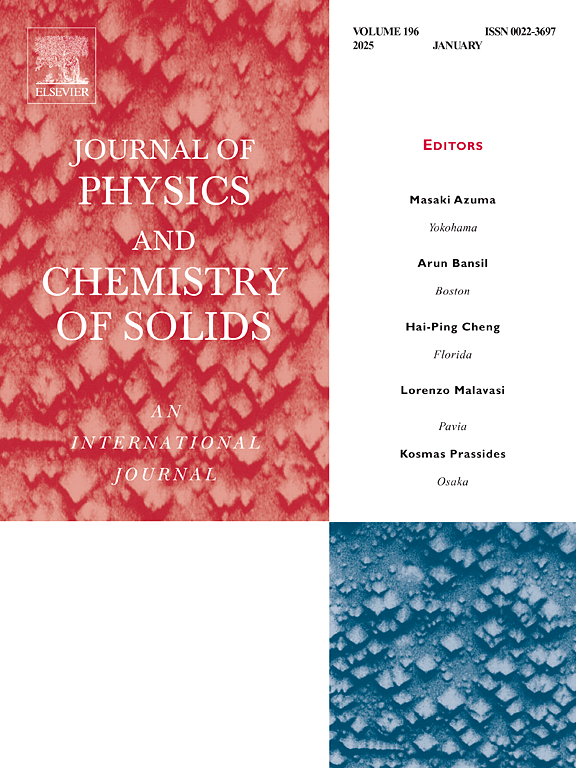Synthesis of uniformly dispersed NiCoFe trimetallic phosphide for efficient overall water splitting
IF 4.9
3区 材料科学
Q2 CHEMISTRY, MULTIDISCIPLINARY
引用次数: 0
Abstract
NiCoFe trimetallic phosphides are synthesized using NiCoFe layered double hydroxides (NiCoFe-LDH) as precursors to investigate the impact of a third transition metal dopant on water-splitting properties. The ordered arrangement of transition metal ions within the LDH structure facilitates the phosphorization process, resulting in uniformly dispersed NixCo2Fe–P composites. The heterojunctions between different adjacent phosphide species facilitate electron transfer, modulate the electronic structure of active sites, and improve electrocatalytic properties. Compared to bimetallic phosphide. The Ni0.3Co2Fe–P composite exhibits the highest catalytic performance in both hydrogen evolution reaction (HER) and oxygen evolution reaction (OER) in 1 M KOH. At the current density of 10 mA cm−2, the overpotential for HER and OER is only 91 mV and 290 mV, respectively. As a bifunctional electrocatalyst in an alkaline media, it requires a cell voltage of only 1.61 V to initiate the reaction, with stable electrolysis performance at 10 mA cm−2 for at least 24 h without any deviation.

均匀分散三金属磷化镍铁的合成及高效整体水分解
以NiCoFe层状双氢氧化物(NiCoFe- ldh)为前驱体合成了NiCoFe三金属磷化物,研究了第三过渡金属掺杂对水分解性能的影响。过渡金属离子在LDH结构内有序排列有利于磷酸化过程,形成均匀分散的NixCo2Fe-P复合材料。不同相邻磷化物之间的异质结有利于电子转移,调节活性位点的电子结构,提高电催化性能。与双金属磷化物相比。Ni0.3Co2Fe-P复合材料在1 M KOH条件下的析氢反应(HER)和析氧反应(OER)均表现出最高的催化性能。在电流密度为10 mA cm−2时,HER和OER的过电位分别仅为91 mV和290 mV。作为一种双功能电催化剂,在碱性介质中,只需1.61 V的电池电压即可启动反应,在10 mA cm−2的条件下,电解性能稳定,至少24小时无偏差。
本文章由计算机程序翻译,如有差异,请以英文原文为准。
求助全文
约1分钟内获得全文
求助全文
来源期刊
CiteScore
7.80
自引率
2.50%
发文量
605
审稿时长
40 days
期刊介绍:
The Journal of Physics and Chemistry of Solids is a well-established international medium for publication of archival research in condensed matter and materials sciences. Areas of interest broadly include experimental and theoretical research on electronic, magnetic, spectroscopic and structural properties as well as the statistical mechanics and thermodynamics of materials. The focus is on gaining physical and chemical insight into the properties and potential applications of condensed matter systems.
Within the broad scope of the journal, beyond regular contributions, the editors have identified submissions in the following areas of physics and chemistry of solids to be of special current interest to the journal:
Low-dimensional systems
Exotic states of quantum electron matter including topological phases
Energy conversion and storage
Interfaces, nanoparticles and catalysts.

 求助内容:
求助内容: 应助结果提醒方式:
应助结果提醒方式:


